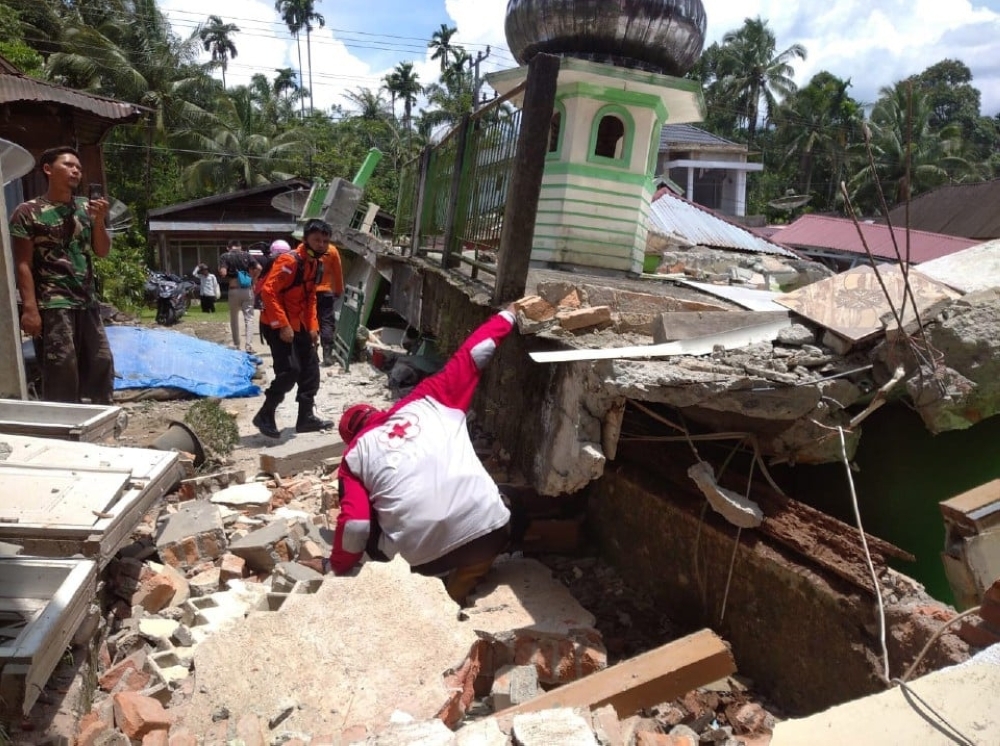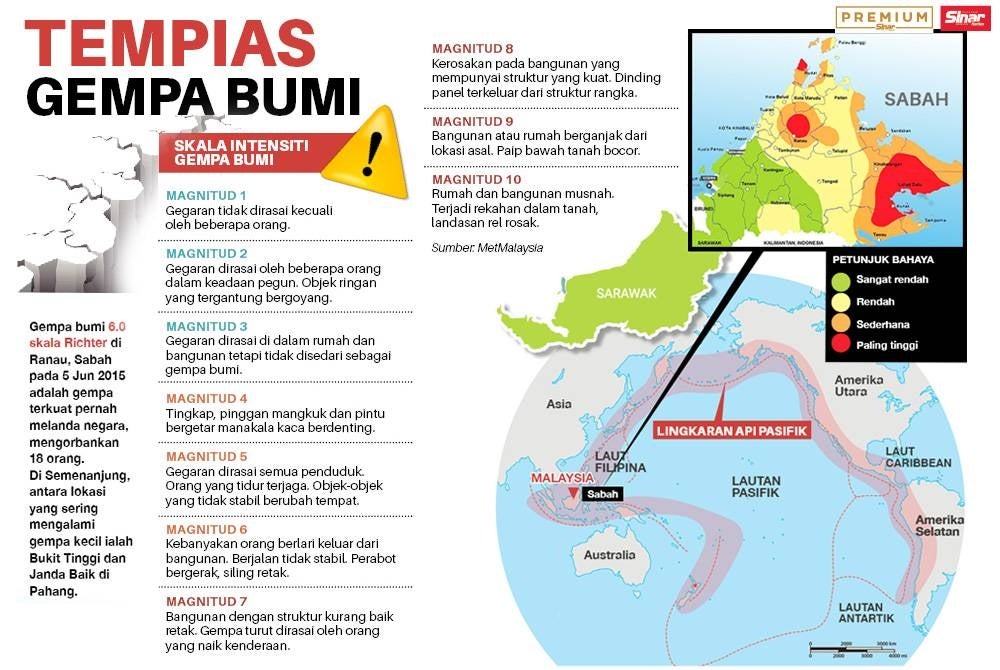SHAH ALAM - Due to a series of major earthquakes which happened in Turkey, Japan and Indonesia in the past two months, experts are warning Malaysians to increase preparedness in the face of natural disasters.
Universiti Teknologi Malaysia (UTM) Seismology and Earthquake Engineering Research Group chief researcher Professor Dr Azlan Adnan said, following the recent series of earthquakes, the Southeast Asian region is also at risk of experiencing large-scale earthquakes, even larger than the one which happened in Turkey and Syria last February 6th.
"Looking at the subduction zone (a large fault line of the earth's plate that moves in a pulsating manner) in Sumatra, for example, strong earthquakes of up to 9.5 magnitude can occur.
"As for Malaysia, the peninsular area is expected to experience an earthquake of up to magnitude 6 while in Sabah it can reach magnitude 7," he added.
Azlan said, the magnitude of the earthquake depends on how long the active fault line will move.
"The existing fault displayed on the geological map is likely to be very long, but only the active and moving fault line will determine the magnitude of the earthquake produced," he said.


Even so, he said, the recline of the large earthquake in Turkey had no effect on the Pacific Ring of Fire in Southeast Asia which caused the country to face the disaster.
"The earthquakes in Turkey and Syria do not affect the occurrence of earthquakes in Malaysia, but the earthquakes that occur in Indonesia and Japan can affect the activity of the Pacific Ring of Fire and further increase the possibility of earthquakes in Malaysia," he said.
In this regard, he said, in preparation for facing the possibility of an earthquake in Malaysia, Azlan put forward some suggested steps that could be taken.
"All buildings must implement earthquake-proof design using the Malaysian Standard guidelines that were published in 2017. Secondly the construction of buildings must fully comply with the conditions that have been determined by the guidelines.
"Next, buildings that have been built, especially old and important ones such as schools and hospitals, need to be reassessed to determine whether they can survive or need to be repaired," he said.
EARTH PLATES
He also suggested that local authorities enforce compliance with earthquake design laws and produce earthquake risk maps for future development planning and preparedness to face such disasters in their areas.
Meanwhile, a geologist at the Center for Natural Disaster Studies, Universiti Malaysia Sabah (UMS), Professor Dr Felix Tongkul stressed that most strong earthquakes in Malaysia are concentrated in several locations in Sabah.
"This is because Sabah is located on a less stable earth plate and is close to the unstable earth plate from the Philippines," he said.
According to him, the situation in Malaysia is quite different compared to neighbouring countries where the earth's plate is relatively stable except in Sabah.
"Major earthquakes in Indonesia and the Philippines, for example, do not produce a significant movement of the earth's plates to produce a major earthquake in Malaysia.
"But strong earthquakes from Indonesia and the Philippines located near Sabah (for example in the Sulu Sea or Sulawesi Sea) can trigger earth movements in Sabah which may result in a large earthquake," he added.
He added that among the areas with the highest risk of earthquakes are Lahad Datu, Kunak, Ranau and Kudat.
Areas with a moderate earthquake hazards could occur in Semporna, Tawau, Kinabatangan, Sandakan, Beluran and Pitas.
Meanwhile, areas with low earthquake risks are Kota Kinabalu, Tuaran, Kota Belud, Kota Marudu, Telupid and Tongod.
According to Felix, even though the risk of a major earthquake in Malaysia is not as great as in neighbouring countries where they are occurences of active earthquakes, Malaysia needs to be prepared in case of an earthquake in the future.
"Increasing public awareness of the risk of earthquakes as well as preparations before, during and after earthquakes need to be intensified and held continuously, especially for affected communities in Sabah.
"At the same time, compliance with the existing earthquake-resistant building design code needs to be enforced and monitored, especially in high-risk areas," he said.
The magnitude 6 earthquake that hit Ranau, Sabah on June 5, 2015 where 18 people were killed was the strongest earthquake ever to hit the country.

